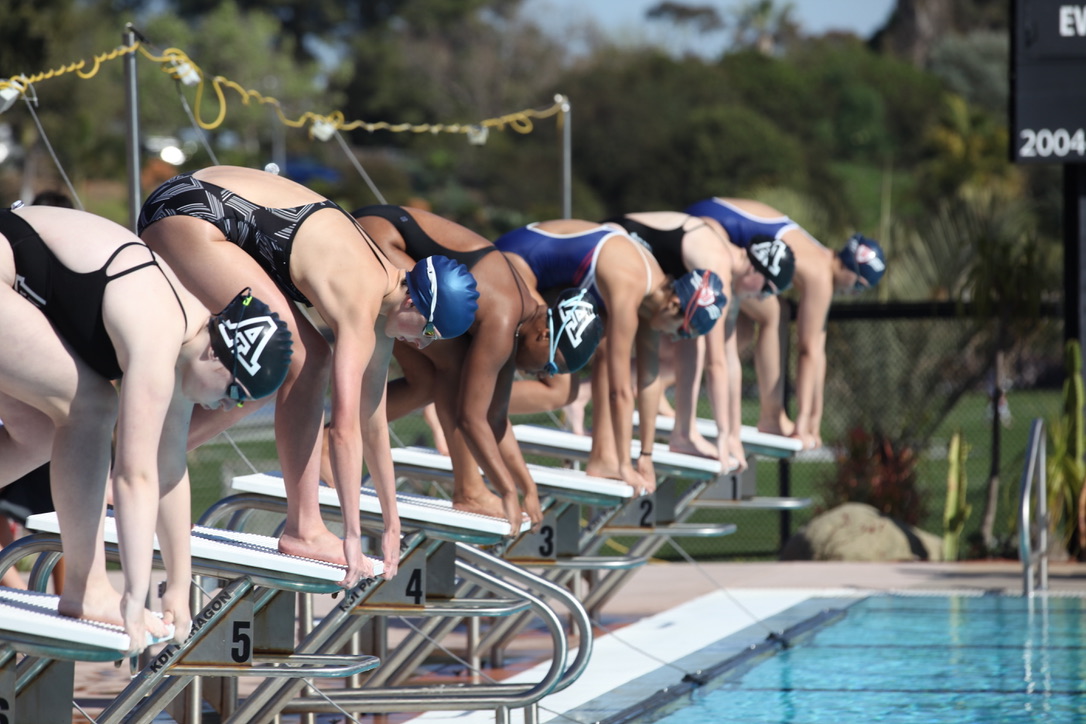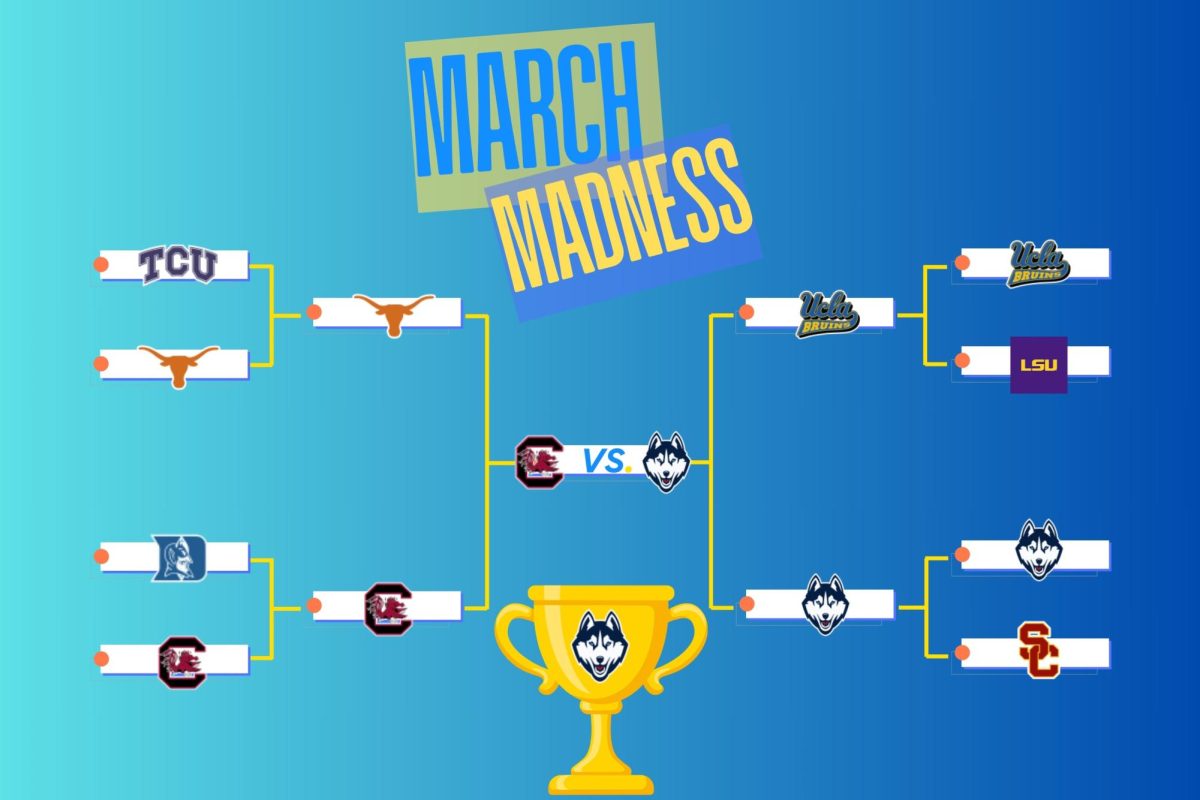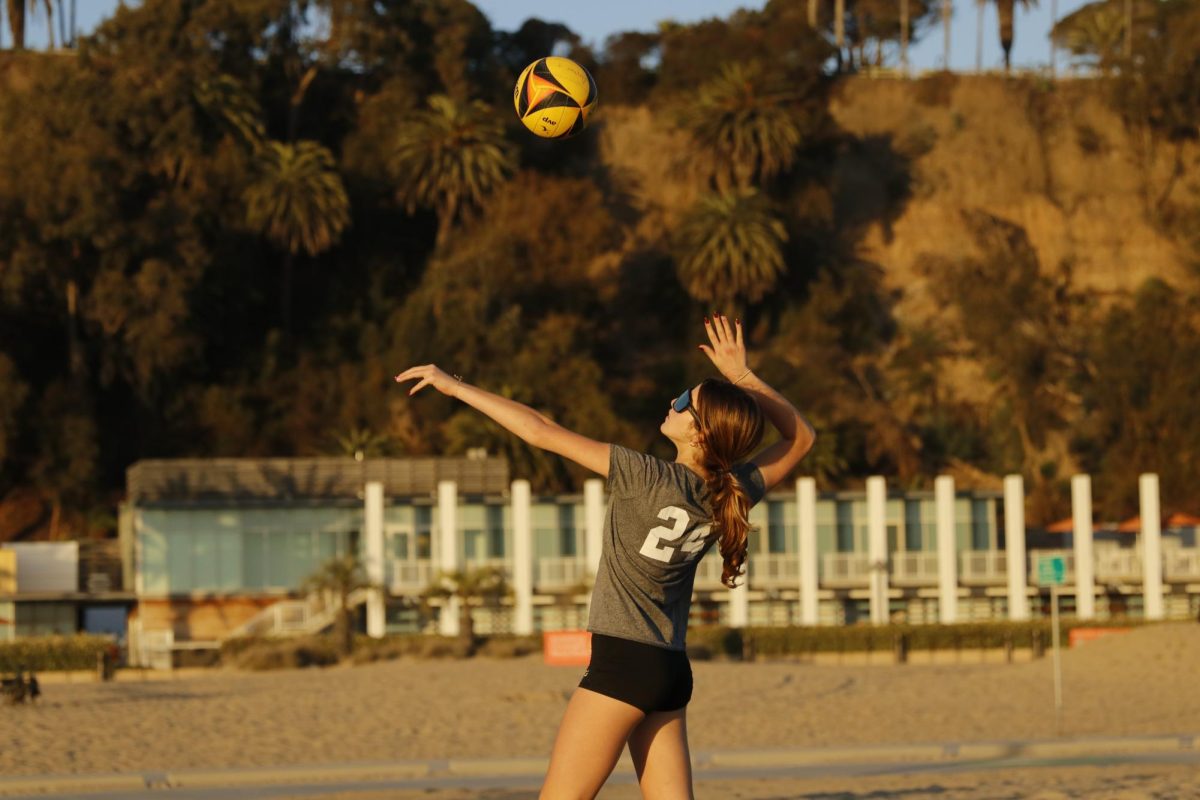The rhythmic sound of oars slicing through water reverberates on rivers, lakes and waterways across the nation every day as rowers train collaboratively, building both individual strength and team unity.
Rowing is a water-based sport where athletes use oars to propel their boats and is divided into two disciplines: sculling and sweep rowing. In both practices, the repetitive movement involves pushing against the water with the oars to generate forward momentum.
Rowing gained popularity when it was introduced to the Olympics in 1900. Initially, it was only open to male athletes; however, in 1976, athletes of all genders became eligible to compete in the sport. Recently, the surge in popularity of rowing machines in gyms has further fostered interest in the activity.
Among the thousands of high school rowers practicing across the U.S., seniors Sophie Sackett and Eleanor Madley row their boats in Marina del Ray from 4:15-6:45 after school from Monday to Friday. They occasionally wake up at 7 a.m. on Sunday for an optional practice when they are preparing for a race. Sackett and Madley are both training at Marina Aquatic Center, which is held at UCLA Marina Aquatic Center in Marina del Rey.
Sackett and Madley were inspired by their families’ passion for rowing in college, and they began participating in the sport during the COVID-19 lockdown. Sackett said senior teams serve as a source of motivation for her own rowing journey. Additionally, she said she values the team aspect of the sport.
“I think [rowing] is really great because it’s a really physically demanding sport, and you can do it at so many different levels. You could just do it with your friends casually in a novice setting or you could go to the Olympics, nationals or World Championships,” Sackett said. “I think it’s also just a great sport in general because the actual work is basically doing the same motion over and over again. You really have to push yourself, and I think it’s really good for endurance and stamina. Also, it’s just really hard physically, so it’s a great workout, even if you’re just doing it on a rowing machine.”
Marina Aquatic Center head coach Zohar Abramovitz has been involved in the sport for over 25 years. He said the difference between rowing and other sports is the collaboration that goes into each practice.
“You are not going anywhere without your teammates, and you have to coordinate your efforts to such a remarkable degree that you really are breathing one breath, your hearts are beating in rhythm together and you’re doing everything at its best,” Abramovitz said. “Not only are you exerting yourself at an incredibly high level, but you’re also having to maintain this awareness and consciousness of what your teammates are doing and work together with them in order to be successful.”
Madley said she not only gained valuable insights into sports psychology through her experience in rowing but has also applied the lessons she has learned to her daily life.
“I’ve learned lots of cool new mental tools to strengthen your emotional state. Rowing has been really helpful, and I feel like it translates to taking tests at school,” Madley said. “It also just gives me an incredible community. Apart from my team, the rowing community is tiny, so it’s like you’ve seen that same person at Regatta, and you get to know people and form relationships. It’s really special.”
As a coach, Abramovitz said his primary objective is to share his expertise with his athletes, enabling them to pursue their goals by implementing the necessary skills through workout routines.
“I’m not necessarily going to be someone to yell at the athletes or try to motivate them in that kind of way,” Abramovitz said. “My hope is that I’m there to inspire them to achieve something that they never knew was possible, reach the depths of strength that they never knew they had and go and do amazing things, but the initial motivation to be successful comes from them.”
According to a National Library of Medicine study, the number of female rowers in collegiate rowing has increased by approximately 113 per year. Madley said the rise in popularity of the sport brings her a sense of joy and fulfillment.
“It makes me incredibly happy because it’s a really small sport; it’s very intensive,” Madley said. “It takes a lot of time, but I’m so happy that especially more young women are doing it because it’s such an amazing way to help get into college and just find an incredible community where you’re really honoring strong women and powerful women.”










